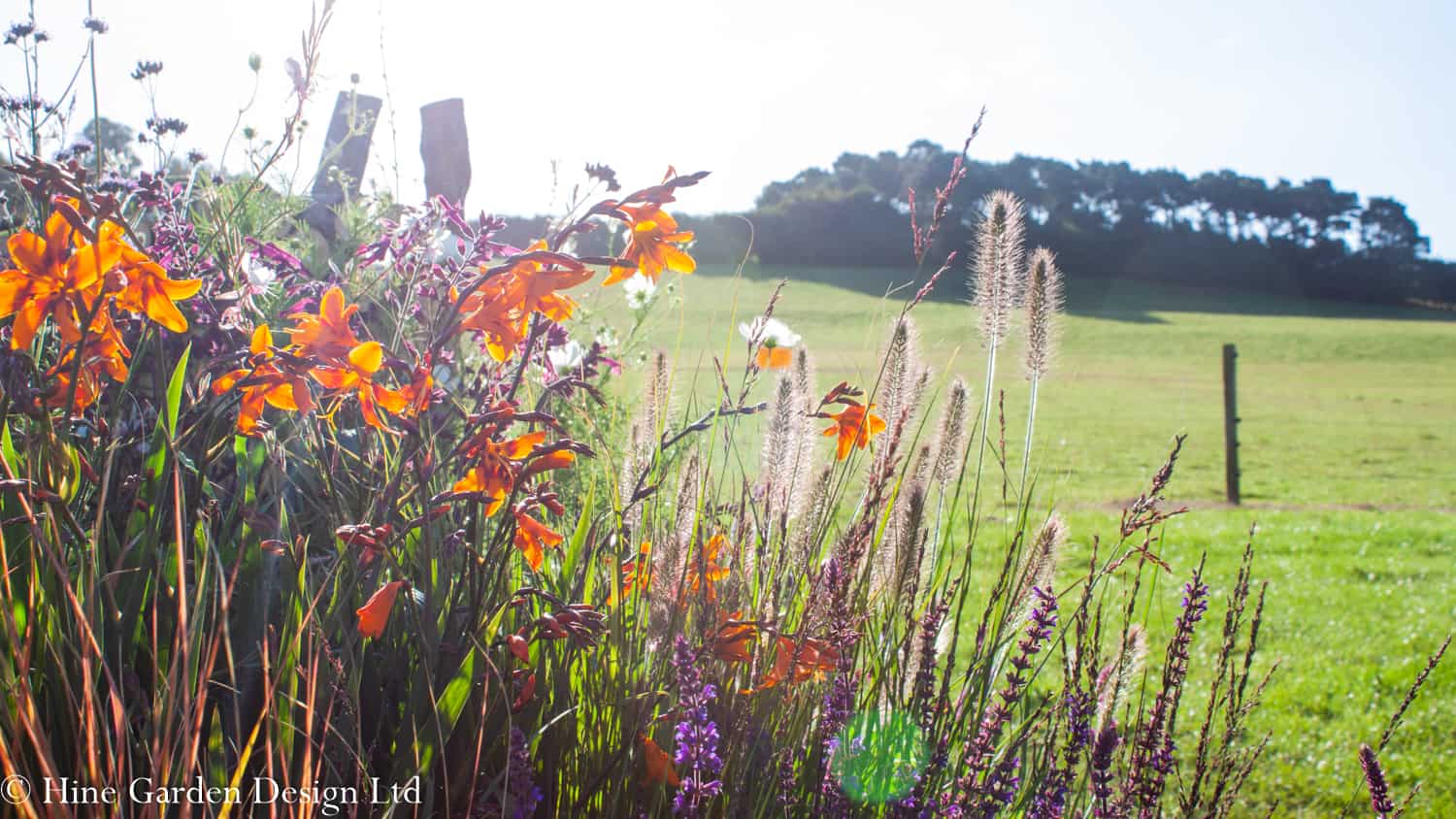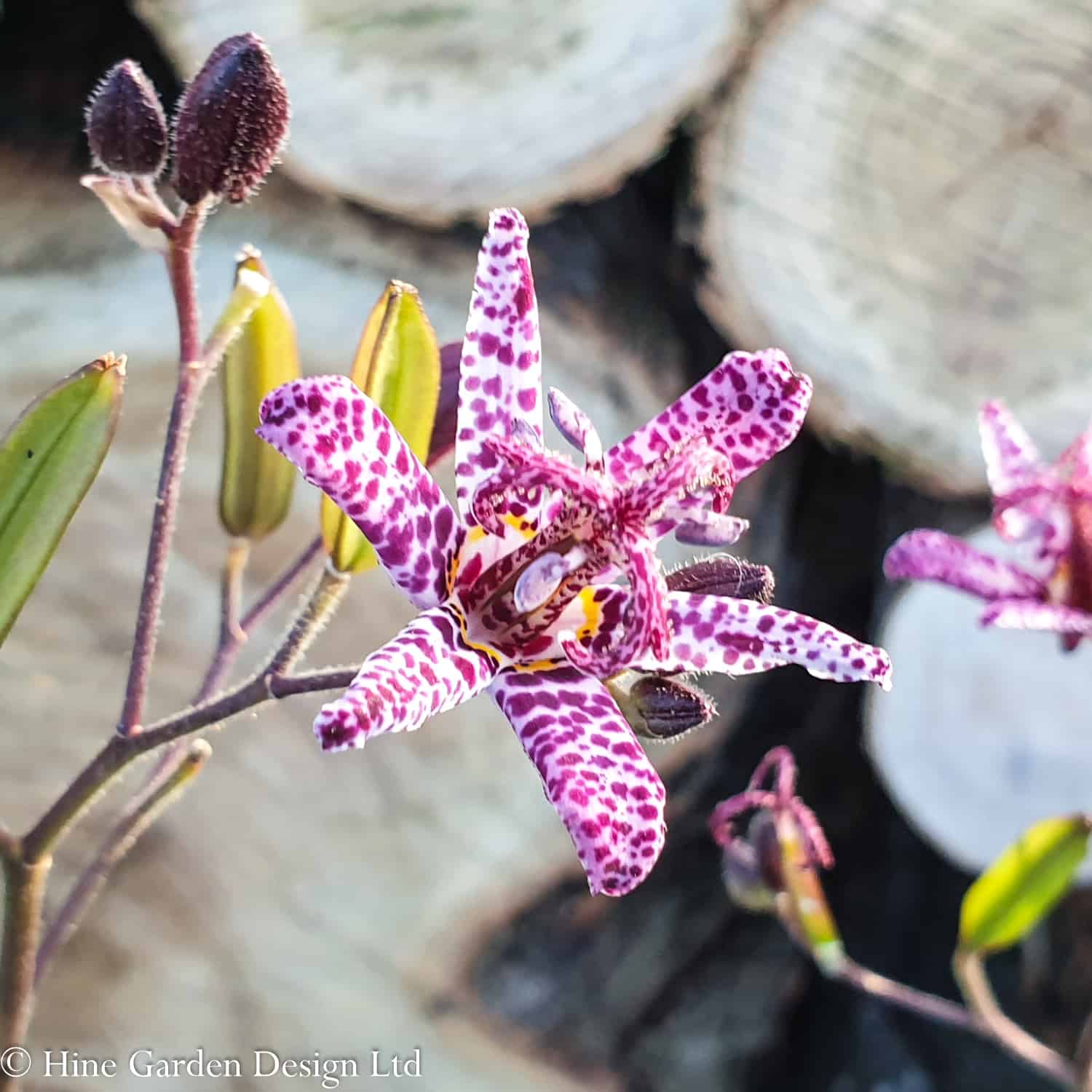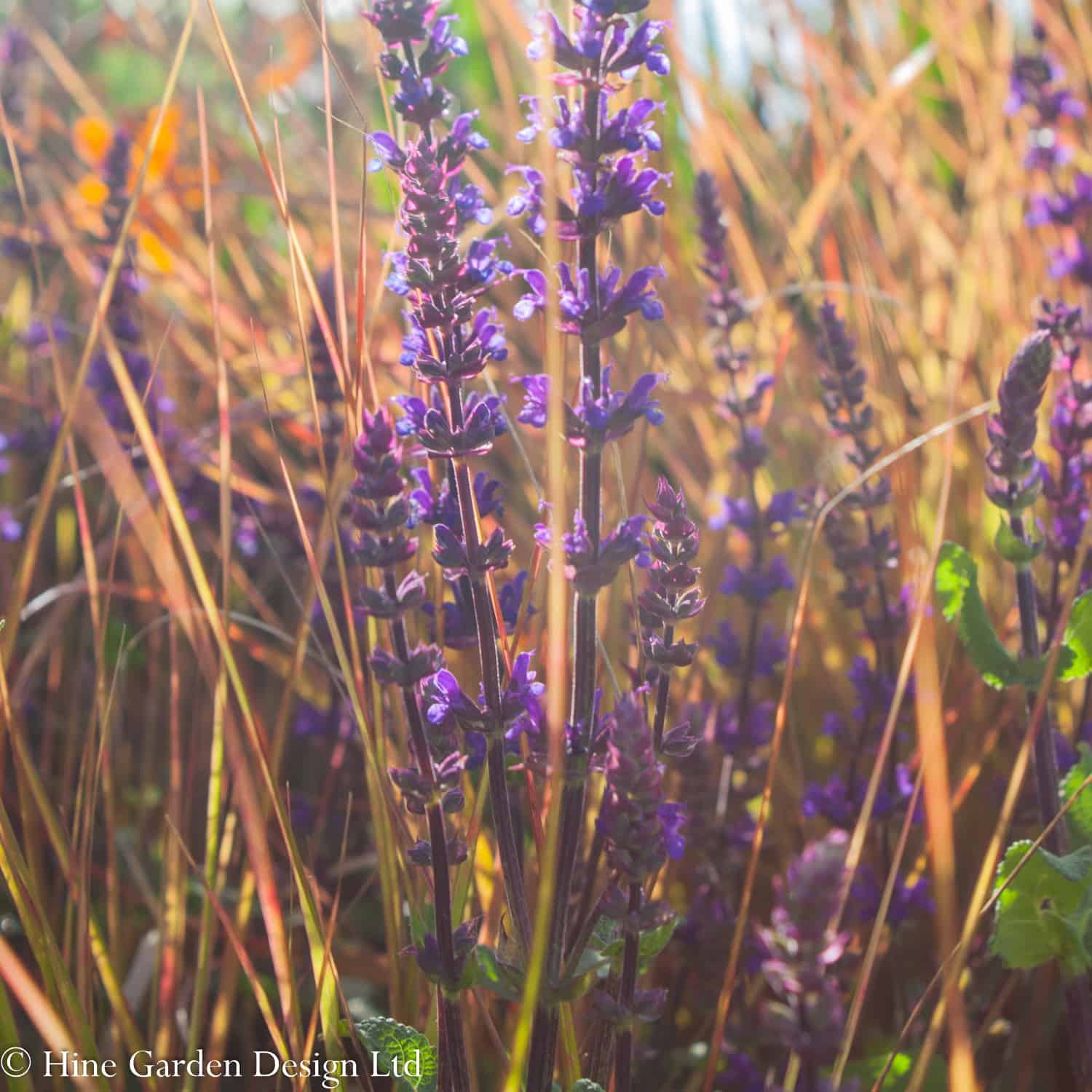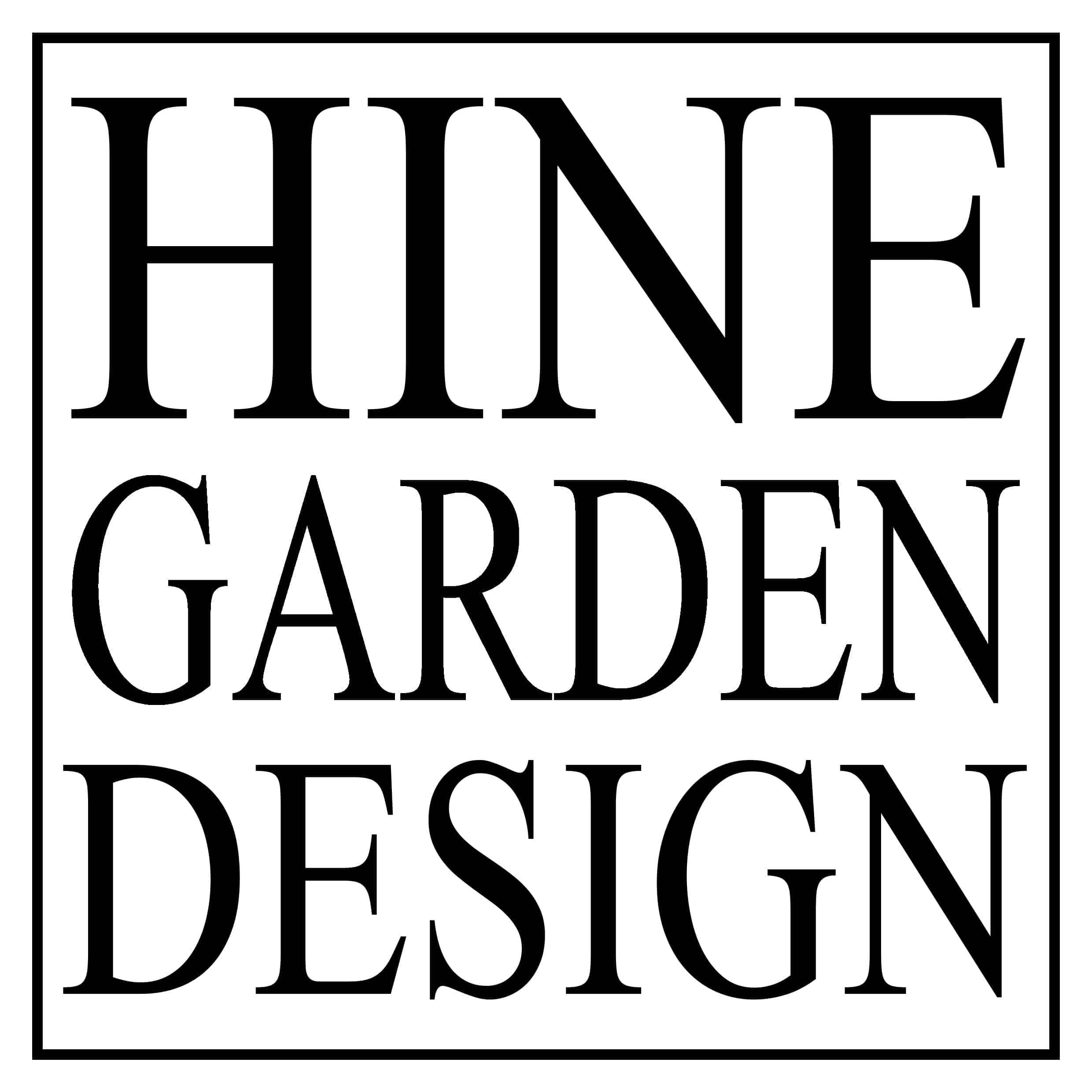Belvoir flower show 2020 Countryside border
The Feast Garden was presented with two awards:
‘The Duchess of Rutland’s Show Garden Award’ for best in show as judged and presented by RHS judges Rosy Hardy and Martin Fish. & ‘Professionals Choice’ Chosen by industry professionals and Awarded by David Domoney.
The Feast Garden was designed to offer a beautiful countryside border that provided occasional cut flowers and abundance for wildlife through the planting, log wall and bird/insect bath.
Below you will find further information on elements and plant choices for this border.
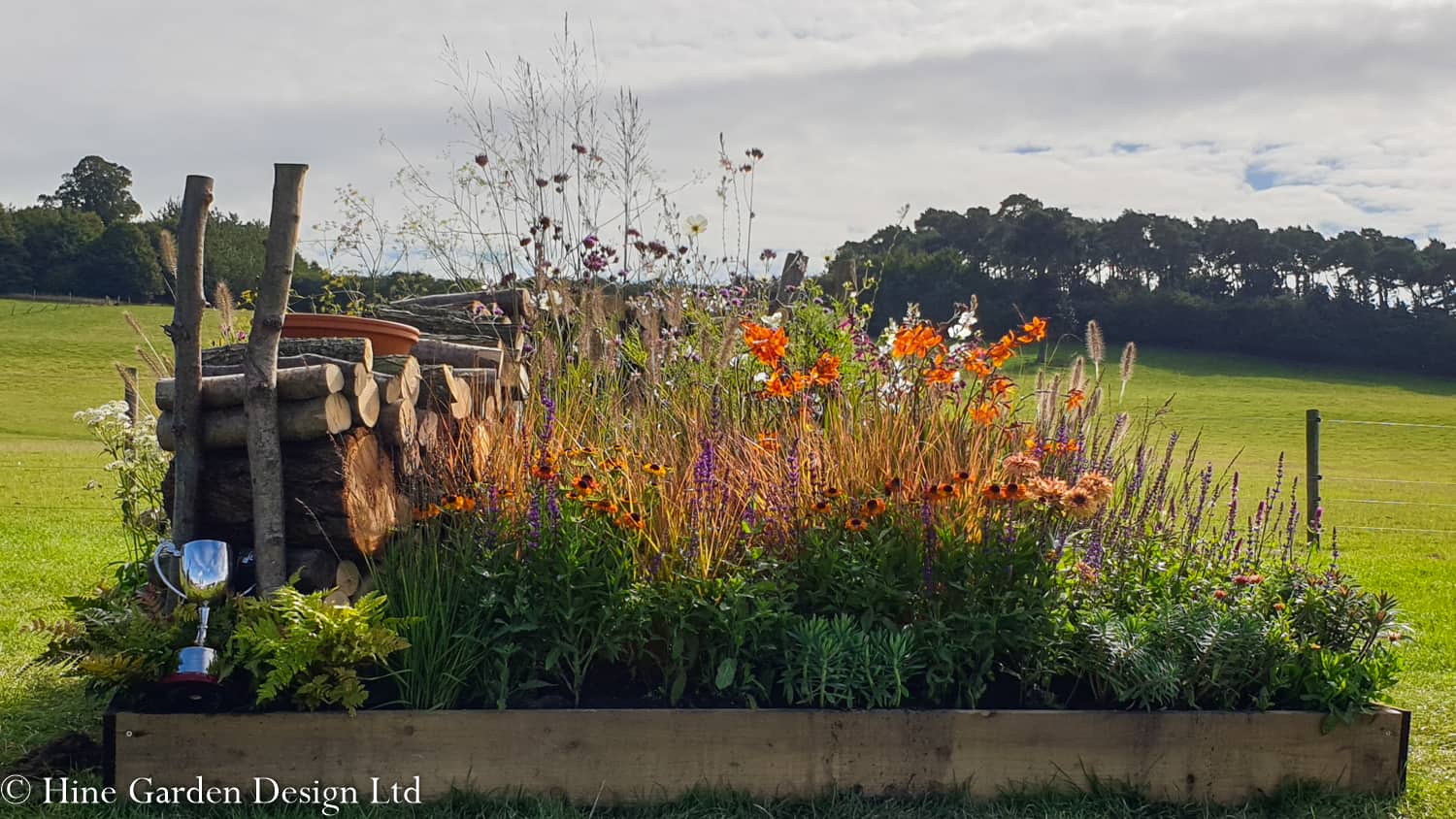
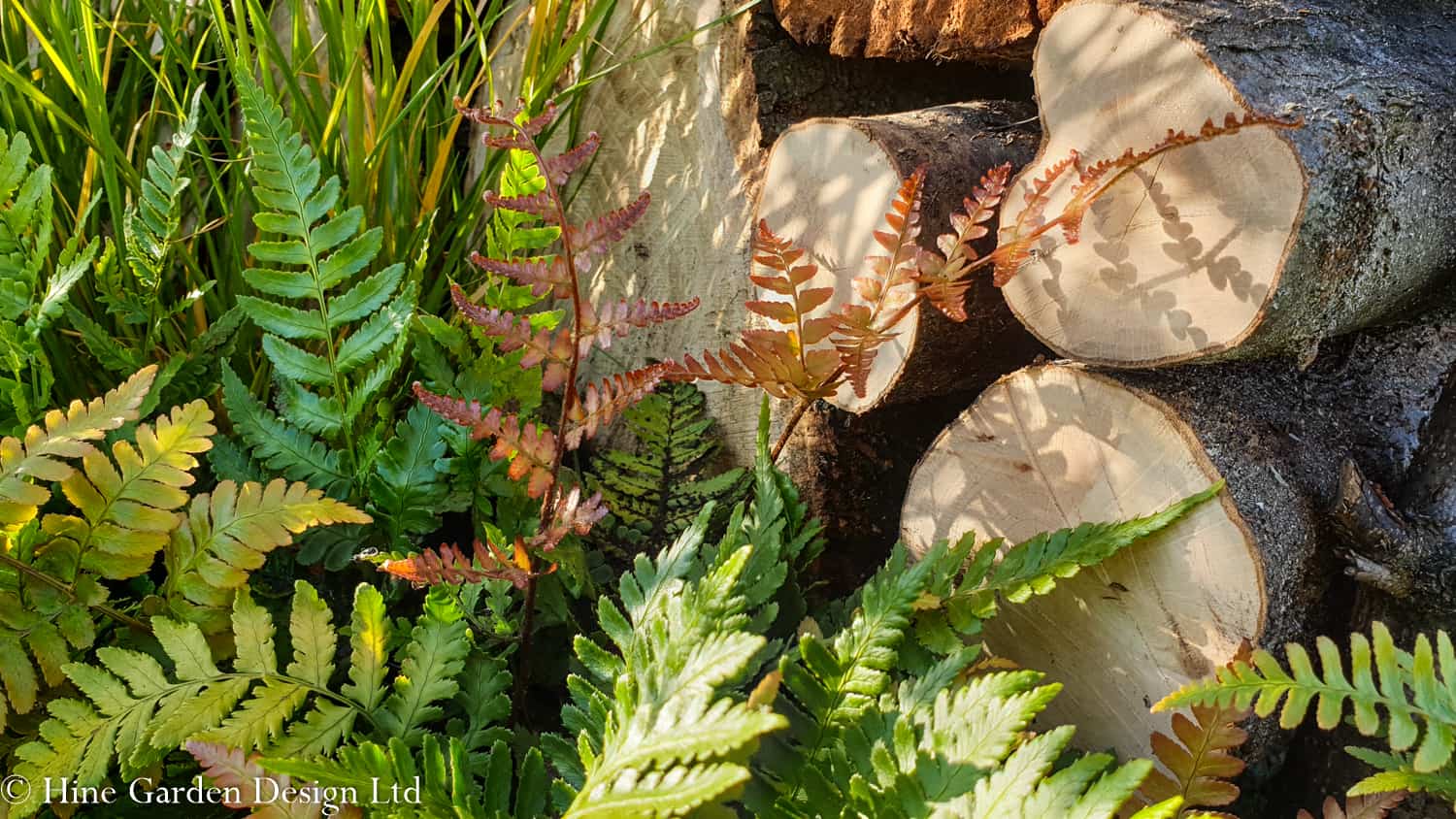
Low Garden Log Wall for Wildlife
Stacked Logs offer a multitude of benefits to wildlife, plants and soil culture. The shade that it provides not only allows for cool, but also reduces evaporation and thus increases humidity, retaining moisture for the plants, soil and wildlife such as amphibians or, indeed, their prey! The timber will slowly decay providing slow and steady exchange of nutrients and structure to the soil and food for a myriad of insects which themselves benefit your garden and feed further wildlife. The timber is its self harvested by insects to build nests both in and with, whilst also providing a static, stationary backdrop highlighting the movement of plants against it.
Wildlife water feature for flying pollinators, bats and birds
Water is one of the very best things you can do for wildlife in your garden space. A bird bath can provide respite for insects and birds alike travelling through their day. At ground level a shallow bowl can hydrate small mammals such as hedgehogs, during the now drier summer we are experiencing these shallow dishes of fresh water can be a life saver. Place a rock or something similar in the bowl, bath or dish and the insects can easily access the shallow water around it safely. A pond its self can house wildlife, but always best to provide something to act as a ramp so that any passing mammals looking to quench their thirst can find a way out if them become a little wet in the process.
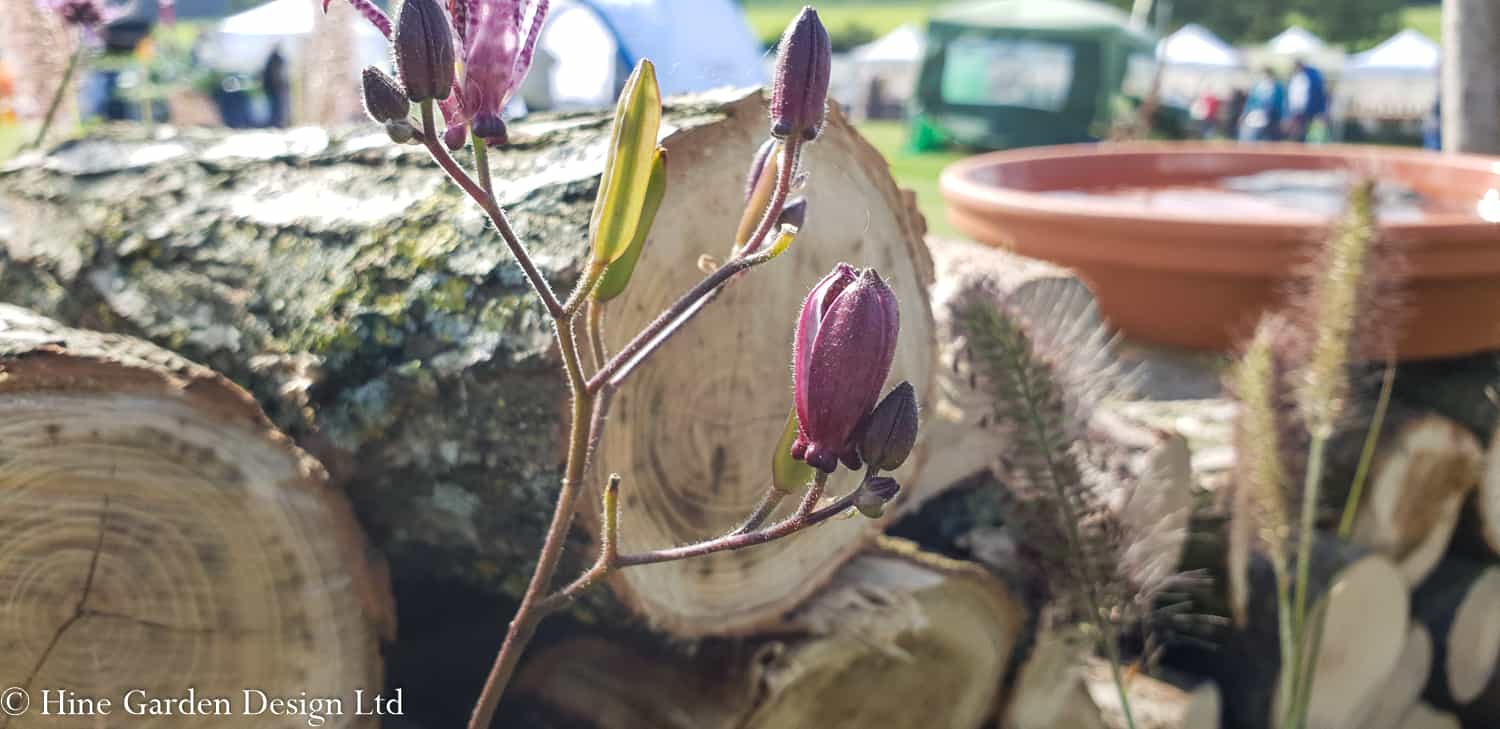
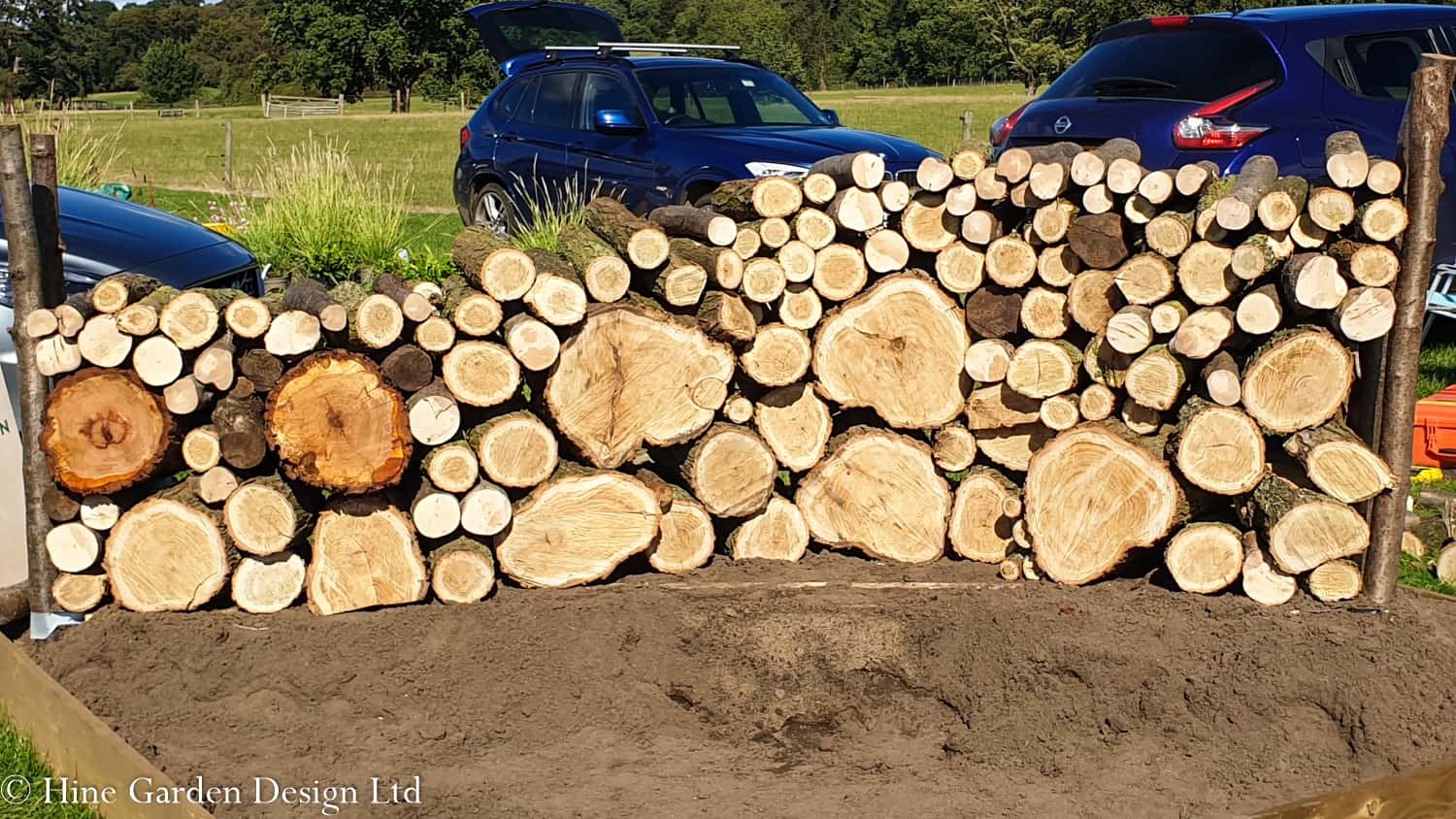
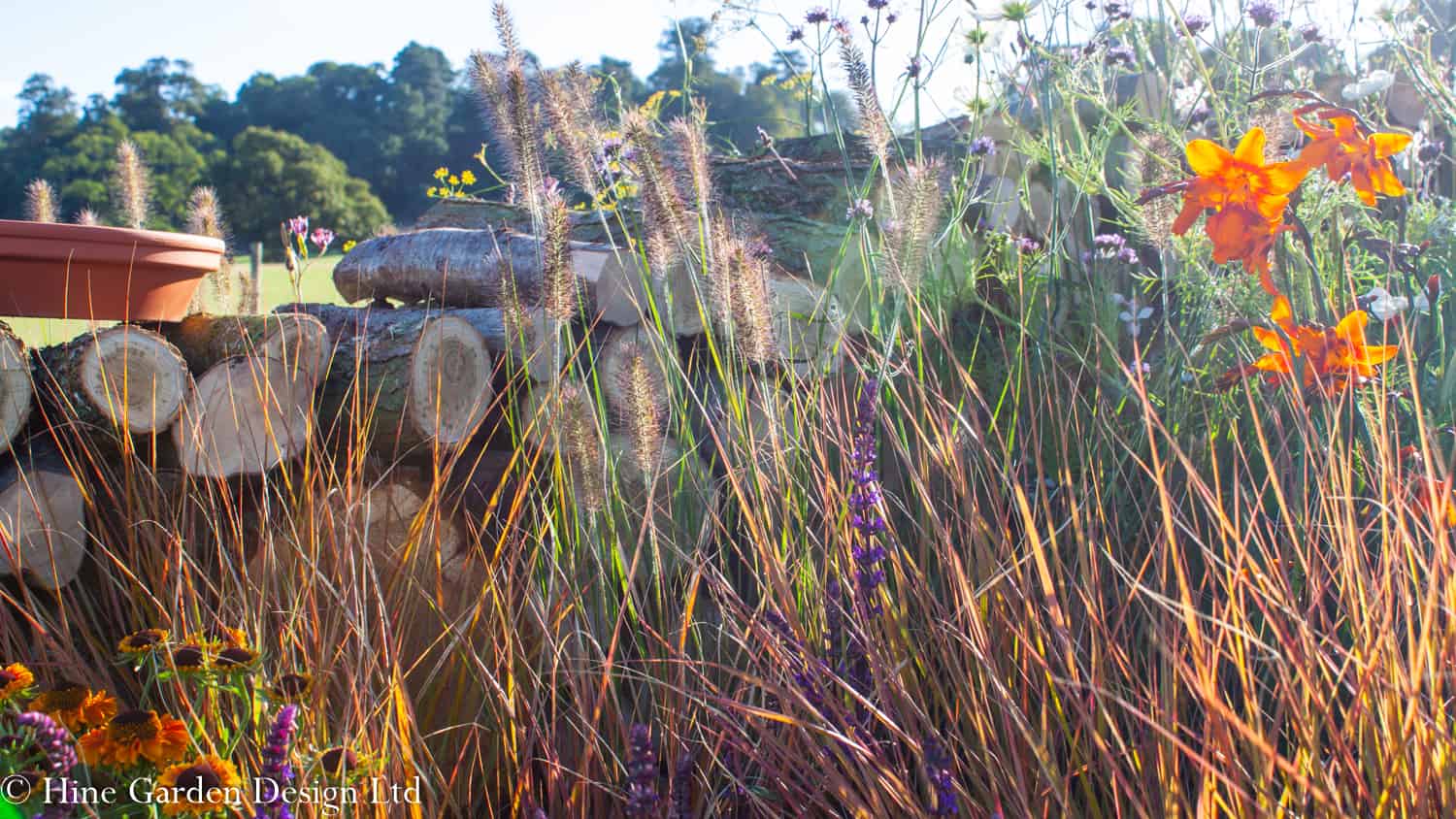
Plant List for Wildlife and Garden Cut Flowers
.
Wildlife benefits
Cut flower / garden properties
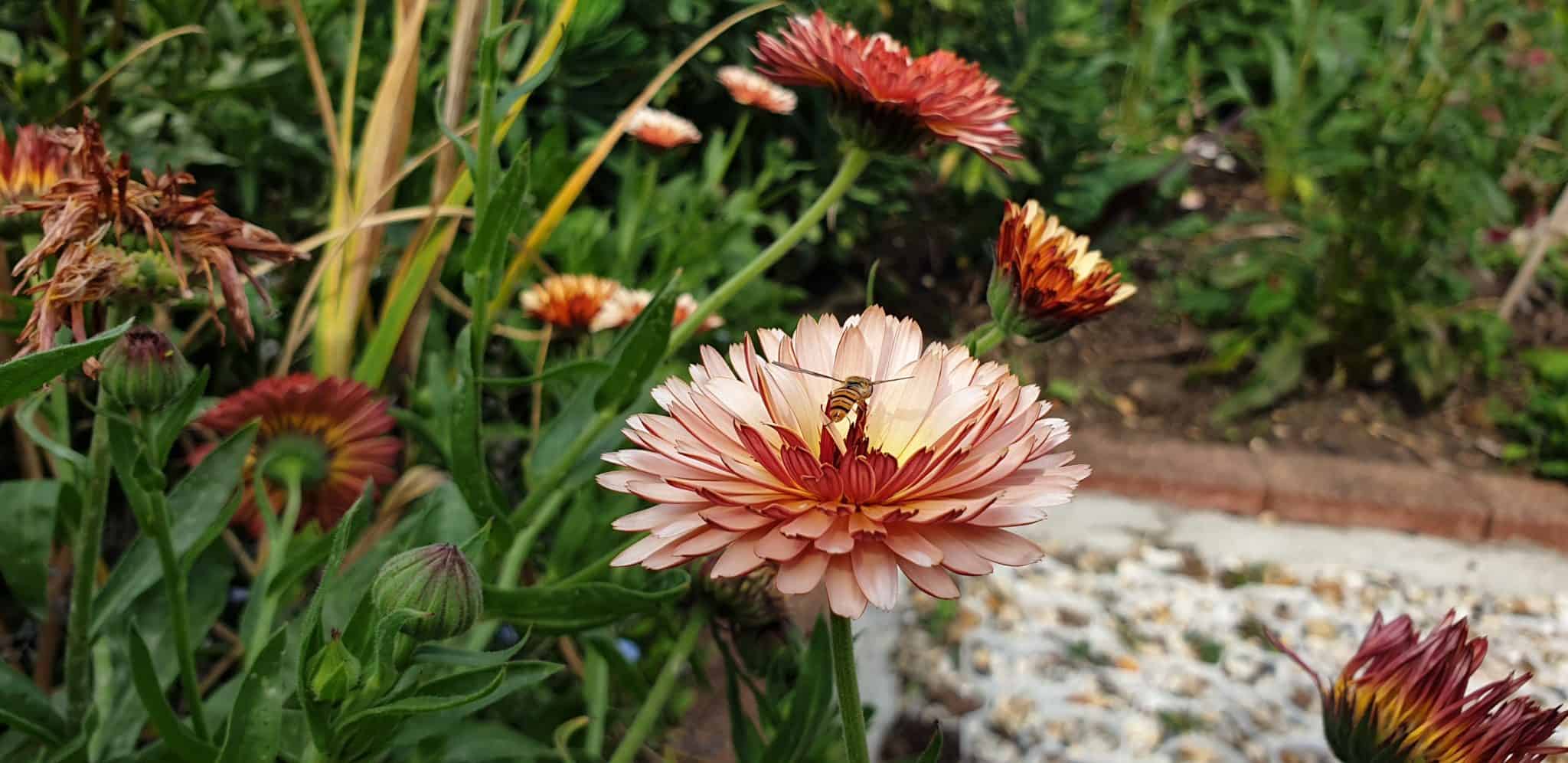
Annuals
Annuals by their nature flower persistently and profusely, trying to ensure the next generation through the process of setting seed. They offer abundant forage for pollinators.
Annuals by their nature flower persistently and profusely, trying to ensure the next generation through the process of setting seed. They offer abundant forage for pollinators.
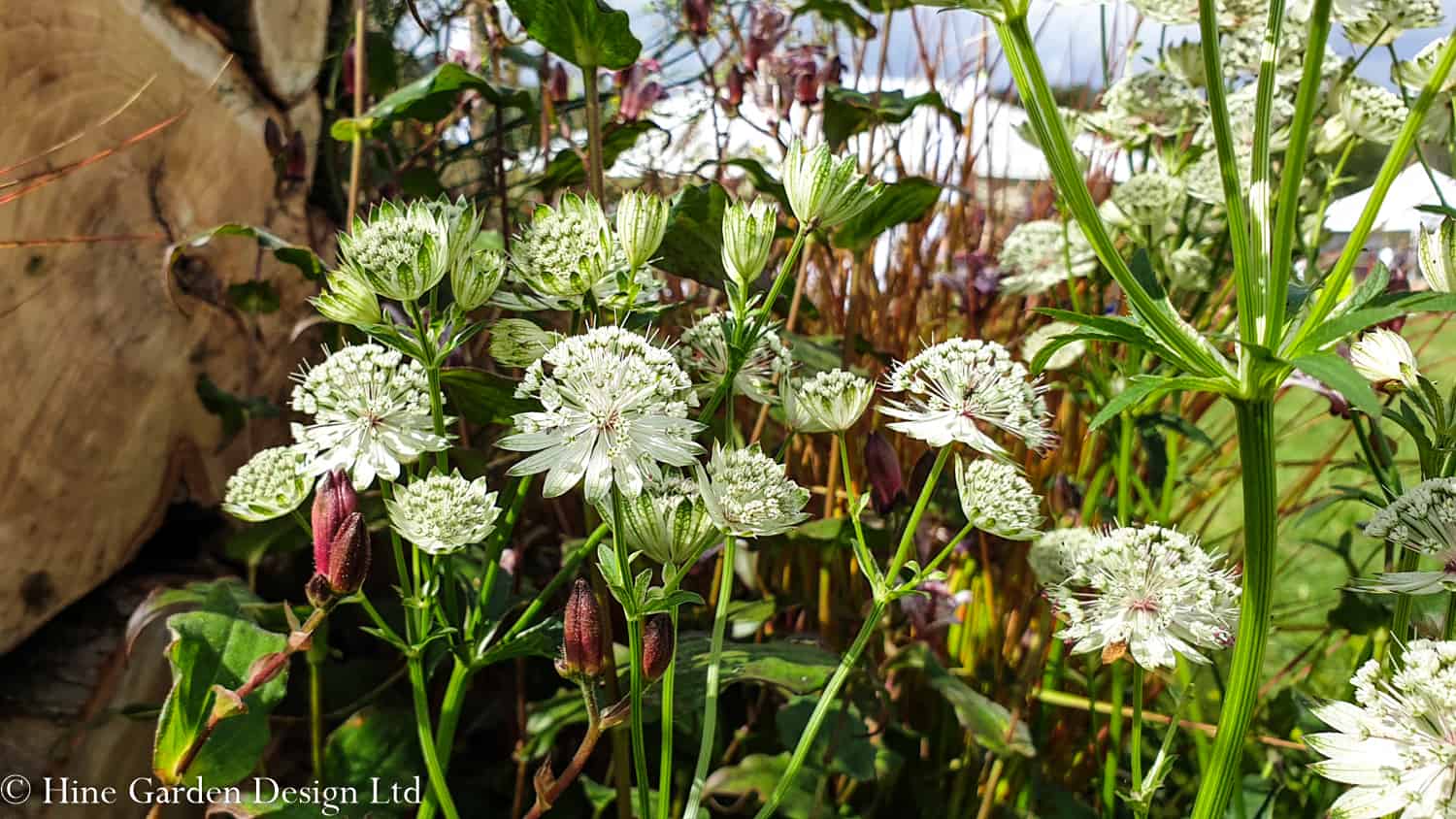
Astrantia major subsp. involucrata 'Shaggy'
Astrantias are popular with many different pollinators, bees and hoverfly's in particular.
Astrantias are fabulous cut flowers. This relatively tall Astrantia provides perfect cutting material offering long straight stems. This particular variety have green tipped bracts which gives it a quality that simple white flowers do not share.
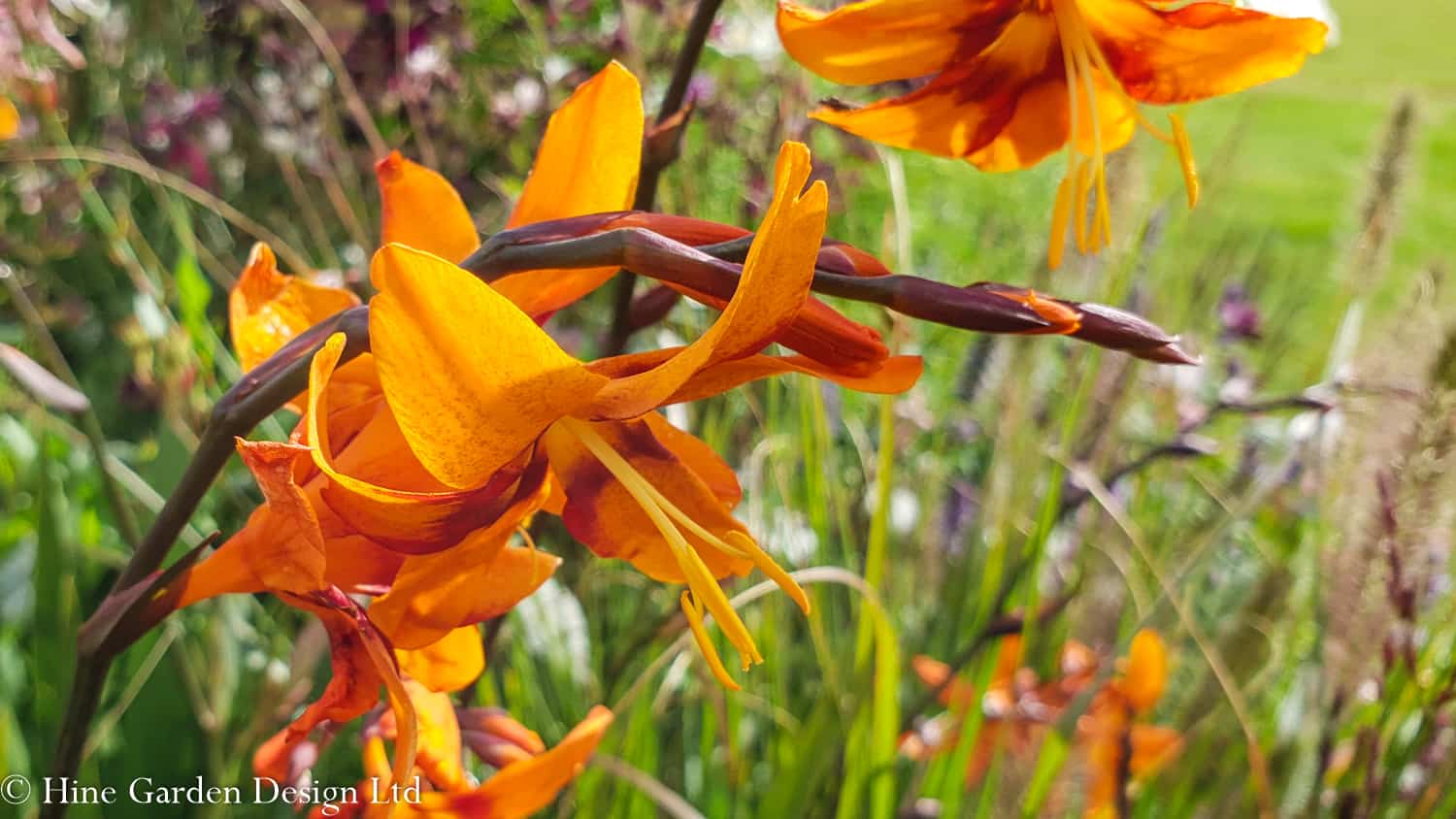
Crocosmia x crocosmiiflora ‘Emily Mckenzie’
Crocosmia offer forage to a wide range of pollinators.
This Crocosmia offers a strong upright, tall and sturdy stems. A somewhat unusual Crocosmia it offers orange blooms with a red flush through the petals, the bracts of the blooms also have a purple tinge to them making them a delight to work with and amenable to a great deal of colour combinations.
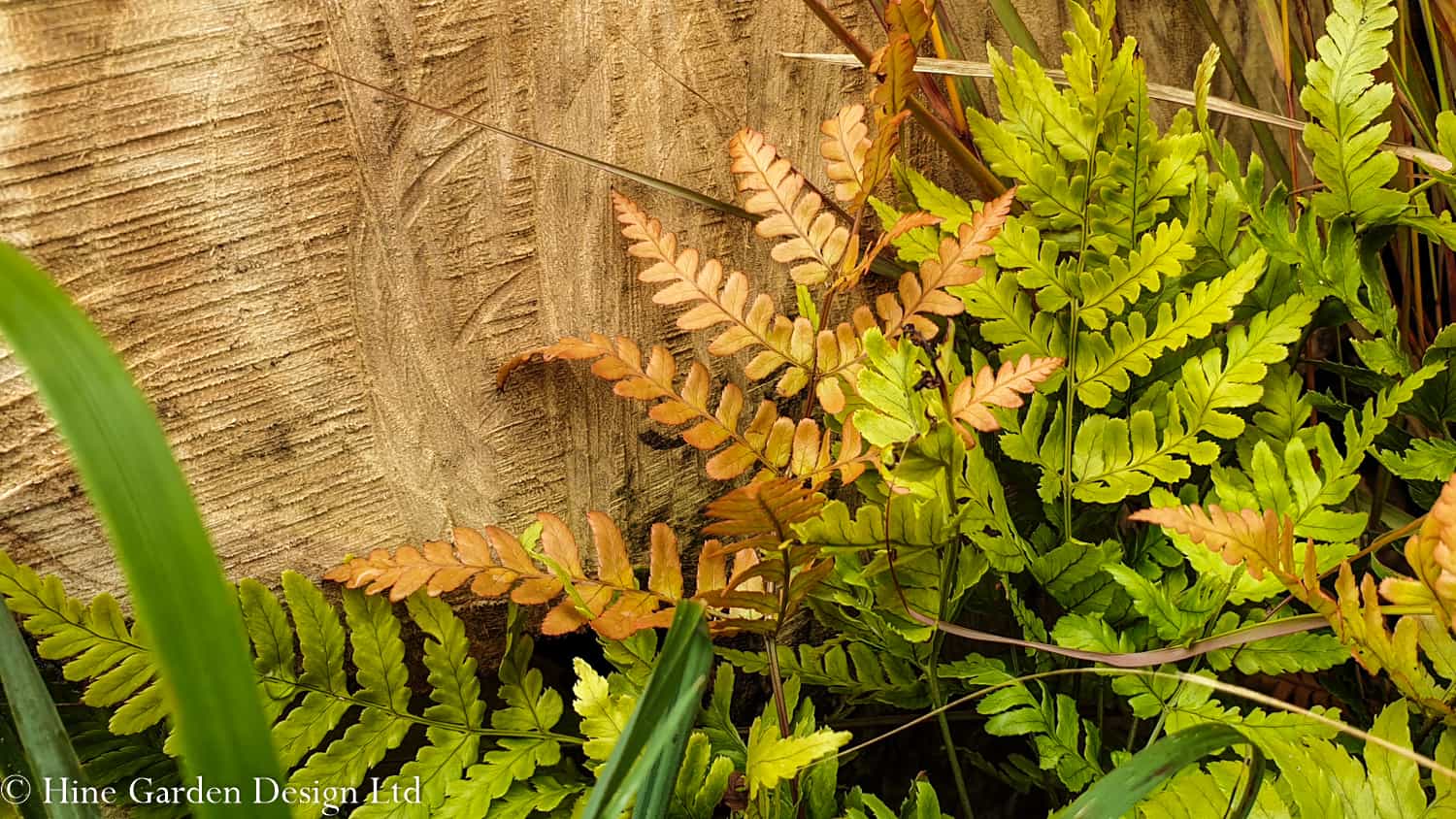
Dryopteris erythrosora
Ferns with their large complex leaves offer shelter and a place to hide to wildlife at ground level. Ferns are also used by some wildlife as nesting material be that a hedgehog or a bird.
Ferns offer a beautiful backdrop to flower arrangements.
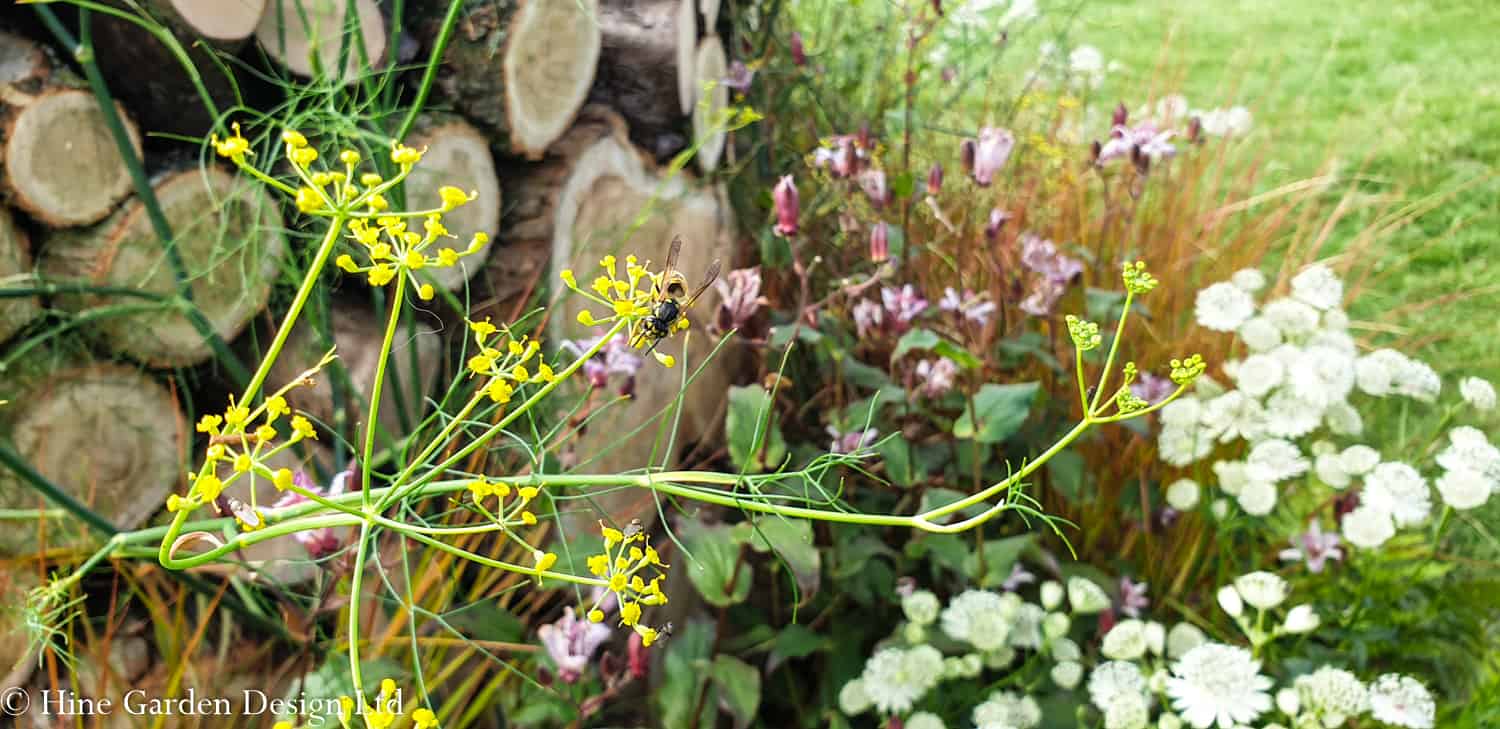
Foeniculum vulgare ‘Purpureum’
The nectar and pollen of the humble umbel fennel flower not only attracts the classic pollinators such as bees, butterflies and moths to its pollen and nectar rich tiny flowers, but also a host of beneficial insects such as ladybirds and solider beetles. These beneficial insects are good friends to the gardener helping defend your garden against such beasties as aphids. Birds, also known for there aphid consuming properties are in turn attracted to the seeds of the fennel as a source of food.
Fennel is a fab cut flower patch plant. It offers not only a bountiful flower harvest, but also a frondy frothy foliage for your arrangements.
As if that wasn't enough this plant has scent, cuts a stunning and statuesque silhouette against the sun and it is edible.
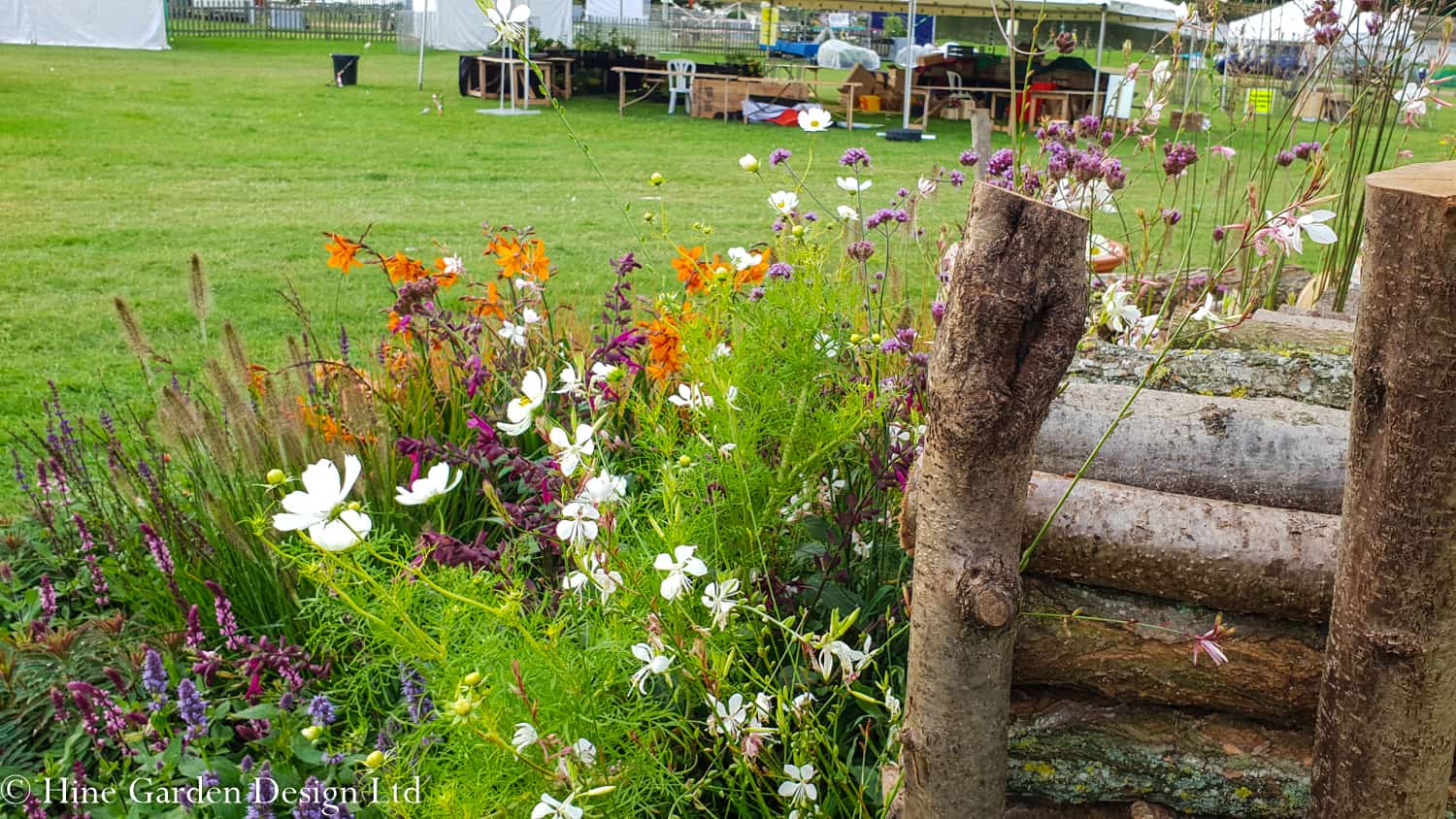
Gaura lindheimeri ‘The Bride’
Gaura offers persistent flowers from early summer until mid to late autumn which are great forage for pollinators.
These elegant arching stems with dainty white flowers atop are regularly used in floral arrangements, offering tall stems and a delicate touch. With a long vase life they have long been used in wedding bouquets, hence the name!
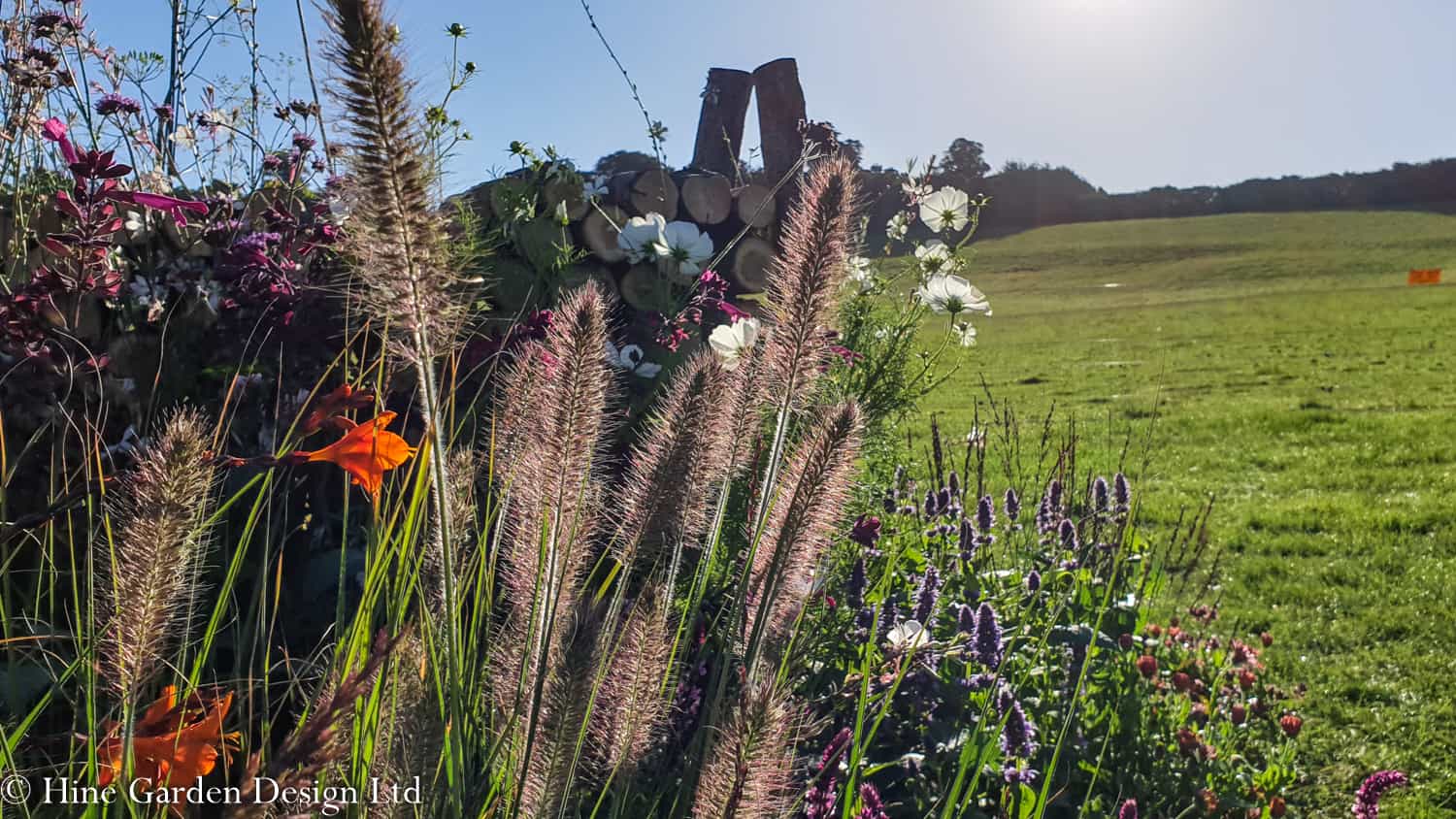
Ornamental Grasses
Grasses, that is to say, not lawns, are great habitat for wildlife, providing shelter both in the heat of summer and through winter if left to stand, the traditional pollen for pollinators and seeds for birds. They also offer nesting forage for birds and small mammals such as hedgehogs, who so desperately need our help. Taller grasses provide perfect positioning for spiders webs that look stunning in a winter frost or against an Autumn sun glow.
Grasses not only add structure and dynamism to the garden, but also to your flower arrangements. Dried or fresh they add substance to an arrangement that is often light and not overbearing. It goes almost without saying that grasses add drama to a garden, weather that be in tall over winter flower heads or evergreen foliage as a groundcover, but they can also add sound, helping to envelop the viewer in the garden, distracting form surrounding noise.

Salvia nemorosa ‘Caradonna’
Salvias in general are a great choice for the Wildlife friendly garden. The deep blue/Purples are very attractive to pollinators but in particular bees who see the blue spectrum better than any other colour. Bees will often make their way up a stem visiting as many of the blooms as possible enjoying a pollen and nectar feast!
Although not a traditional Cut Flower S. Caradonna lasts well over a week in a vase and can easily last up to two if the water in the vase is looked after. It adds deep colour accents to arrangements.
The dark stems of this Salvia have made it ever more popular, and if deadheaded provides a bountiful succession of flowers through into Autumn.

Verbena bonariensis
Verbena bonariensis is one of those plants that seems to attract all the pollinators possible. Bees, Butterlies and Moths are powerless to resist its bounty. The flowers that follow onto seed heads also providing food for the local birdlife.
This is one of those plants that offers so much to a vase, the gardener and wildlife. Its rigid and upright stems can be used to prop up other stems and give overall structure to an arrangement. In fact a vase simply full of these stems makes a beautiful statement piece. Although not often credited for this fact V. bonariensis does have a light scent that is stronger in the evening. This plant in the garden offers height and a veiling effect when screening something from view to give a sense of mystery.
